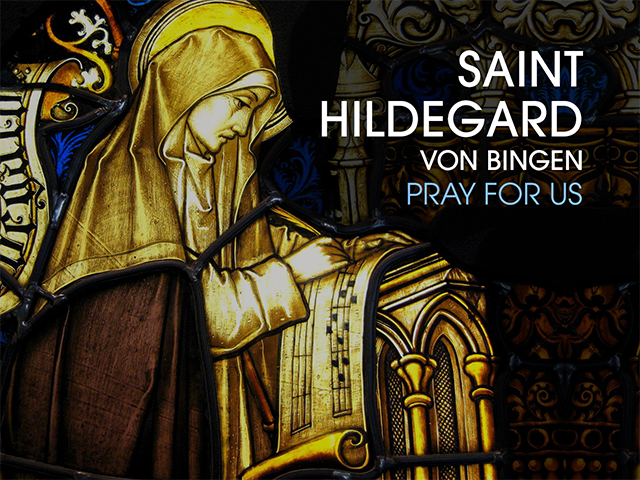



St. Hildegard von Bingen (1098–1179) was born to a large and noble German family. She began to have mystical visions at the age of three which continued throughout her life. Her parents, promising her to the service of God, sent her to be educated at the Benedictine Abbey by an anchoress when she was about eight years of age. At the age of fourteen she became a consecrated nun attached to the Abbey, where she lived a quiet life of prayer for many years. At the age of 38, after the anchoress' death, she was chosen as the new leader of a growing group of nuns. Hildegard led a remarkable and unusual life for a woman of her day. She was an avid composer of sacred music and liturgy, in addition to poems and plays. She also wrote heavily on theology, natural medicine, and natural science. At the age of 42, at the command of God, Hildegard began writing down what she saw in her visions. Her works were widely read, even by the Pope, and leaders around the world sought her council. Her fame as a mystic and prophetess grew, earning her the name "Sibyl of the Rhine." More nuns flocked to join her, causing Hildegard to establish a new monastery at Rupertsberg. She wrote proficiently on the harmony of created nature and man's need to live in balance with it, especially in virtue, morality, and the love of God, which led Pope Benedict XVI to declare her the fourth female Doctor of the Church in 2012 alongside Teresa of Avila, Catherine of Siena, and Thérèse of Lisieux. Because her works were far ahead of her time she is regarded as a historical phenomenon. Hildegard of Bingen is considered the founder of scientific natural history in Germany. Her feast day is September 17th.